Scottish estate hits premium price with Golden Promise barley
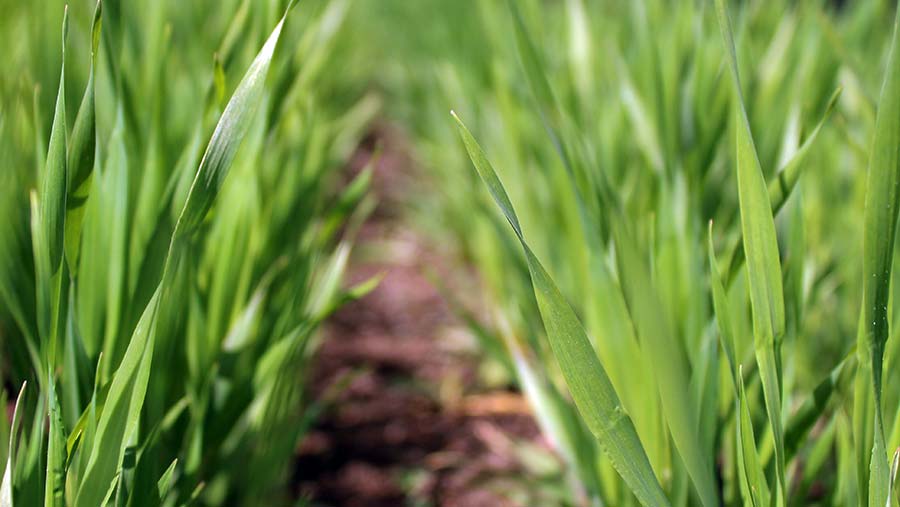 © Oli Hill
© Oli Hill Malting barley is king of the rotation at Farmcare’s Aberdeenshire business, with half of its hefty arable area dedicated to growing this high-value crop.
Monymusk is a traditional Scottish Estate spanning about 20 square miles, encompassing the picture-perfect 18th-century village of Monymusk, farmland, forests and the impressive House of Monymusk, which the Grant family has called home since 1713.
Farm manager Robert Drysdale has been at the helm here for 20 years, in charge of Farmcare’s 1,610ha business growing spring and winter barley, wheat and oilseed rape across four contract farming agreements to the south of Inverurie, some 20 miles north-west of Aberdeen.
See also: Maris Otter malting barley grower nets a tasty premium
Mr Drysdale, who is a former Farmers Weekly Awards Farm Manager of the Year finalist, says the spring barley area is increasing here.
“Spring barley is our main crop and we have increased the area for timeliness reasons as we struggled to get the winter barley in after winter wheat.”
As a result, 650ha of spring barley is in the ground this season – half of the 1,300ha cropped area of the estate.
This year 100ha of the variety Golden Promise is being grown, all of which is on contract for Simpsons Malt.
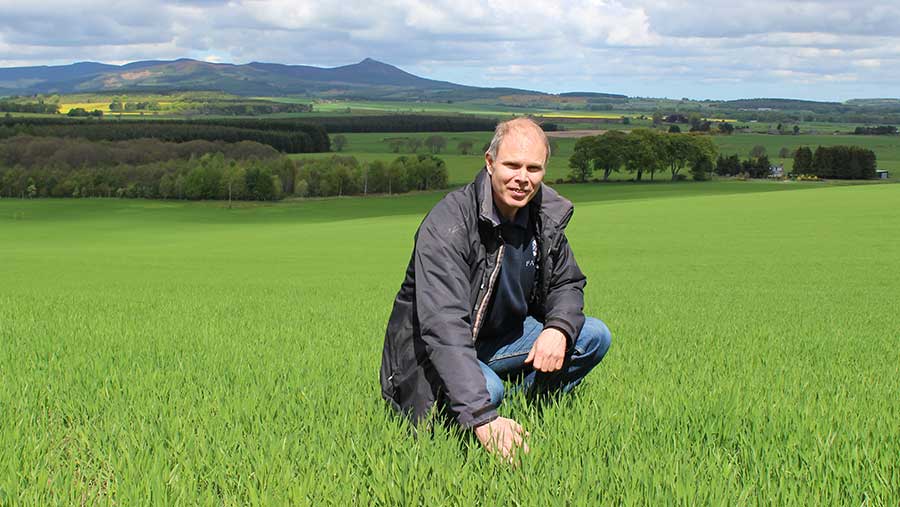
Farmcare farm manager Robert Drysdale in a crop of Golden Promise spring malting barley © Oli Hill
While the malted grain is no longer used for Scotch whisky, this market has been replaced by a booming craft beer sector, both within the UK and for export to the US.
This variety has been grown now for three seasons and Mr Drysdale explains the primary attraction was the early harvest, to ease pressure on the combine, plus an opportunity to diversify from mainstream malting contracts, which have had their premiums eroded thanks to a surge in the national area grown in recent seasons.
Rich-flavoured malt
First recommended for growing in Scotland in 1968, Golden Promise is held in the same high regard as Maris Otter, another highly sought-after niche malting variety, as it produces a rich-flavoured beverage.
This classic variety’s short height, decent yields, strong growth and early maturity made it the top choice for malting barley purchases three decades back, when it was mostly used by distillers for Scotch whisky production.
It was so popular most whisky aged between 35 and 40-years-old today will likely have been made with Golden Promise malted grain.
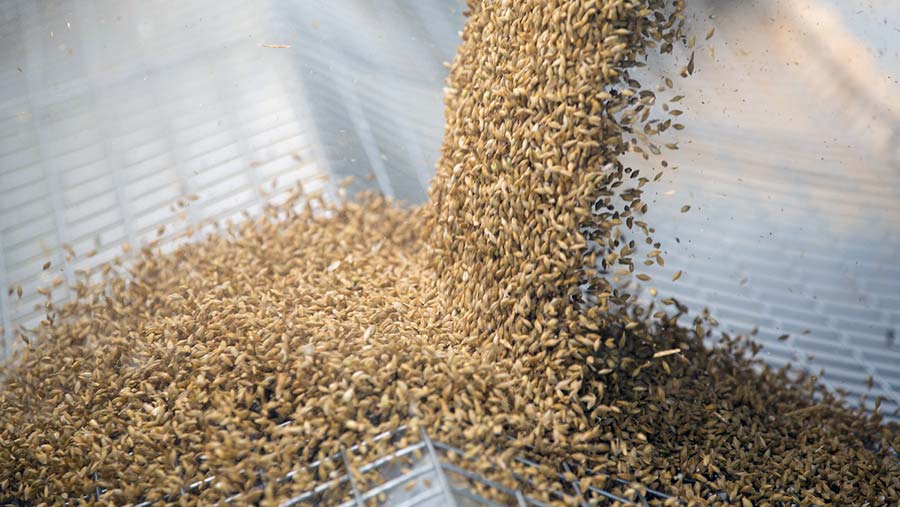
© Tim Scrivener
It has a depth of flavour that makes the perfect base malt for British and American-style India pale ale.
“It is nice to grow a crop that has a clear demand and customers waiting for it with the contract being branded to supply specific brewers.”
The contracted malting specification for this variety has grain nitrogen limit of 1.65%, with premiums rising if the N levels are even lower.
“It is a very early maturing variety, being harvested typically in the last week of August which is a good week ahead of the other varieties. It doesn’t suffer with brackling or skinning either,” notes Mr Drysdale.
It means the harvest crew can get started on combining the spring barley straight after oilseed rape, meaning that the combine won’t be standing idle with a break between crops once cutting begins.
Mildew problems
Golden Promise is very susceptible to mildew so Mr Drysdale aims to get on with a specific mildewicide at the early tillering growth stage, otherwise he can be firefighting the disease throughout the season.
The sprayer then returns as the crop hits growth stage 31 for a normal barley T1 spray.
The fungicide regime at T1 and T2 typically consists of Cebara (cyprodinil + isopyrazam) plus chlorothalonil or Proline (prothioconazole) as appropriate.
In terms of control of other key diseases rhynchosporium and ramularia – Mr Drysdale treats the Golden Promise the same as all other varieties grown on the farm.
“It seems to respond well to newer fungicide chemistry. It has never yielded less than 5t/ha and is no worse than the other varieties for these diseases.”
Establishment is key
Typically spring barley drilling is expected to start in late-March but this is highly dependent on conditions.
Last season, drilling was a long slog, starting on 25 March and enough weather-related setbacks were suffered to mean the campaign wasn’t completed until 9 May. In total contrast, this spring saw work begin in on the same date and wrap up 17 days later.
“All our soils are quite moisture retentive. There is nothing worse than having seed sit in cold, wet soils – it needs to be up and away immediately.”
Soils range from light to medium types with a few areas of heavier clay. The River Don runs through the heart of the estate, so adjacent fields are mainly silty clay, but moving away the land turns to sandy clay loams.
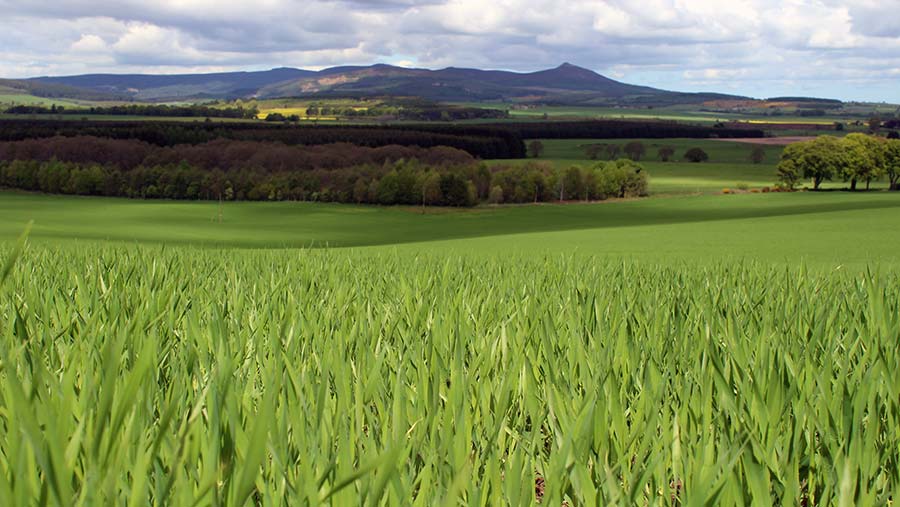
Golden Promise spring malting barley growing on the Monymusk Estate in Aberdeenshire © Oli Hill
Further up the stunning hills that surround Monymusk, land that is too thin and stony to support crop production is better suited to the 130-strong Simmental-cross beef suckler herd the farm also runs.
The cattle provide a healthy source of muck to go back onto the arable land, helping to maintain soil fertility and organic matter levels.
It is a plough-based system for the spring barley, with the aim of turning over as land much as possible before Christmas to allow good weathering over winter.
One pass of a Uni-press followed by the Horsch Pronto, which places seed and starter fertiliser to help get the crop off to a flying start.
“Good establishment is really key. We want to be ploughed early enough to get good weathering on the soil so that come spring the weather has done the work.
“Patience is also important. With the oilseed rape, my cut off for drilling is early September and for the winter barley it’s the end of September.
“With the spring barley, drilling date is less important than the conditions, which should be a priority. Even the crops drilled in early May last year caught up and didn’t push harvest later.”
Seed rates are typically about 440 seeds/sq m with the Golden Promise slightly higher.
Other varieties
Aside from the niche Golden Promise, the farm business also grows Concerto as a mainstay, which when it first came out in 2009 was the sole variety in the ground and today still takes up the largest share of the spring barley area.
However, the proportion of land sown with Concerto is shrinking with the introduction of newer malting varieties Irina and Laureate.
“Irina is a brilliant variety which we grew last year for the first time because of reduced demand for the Concerto, so this was an opportunity to give a newer variety with better yield prospects and agronomics a try.
“It stood well and didn’t brackle, which is an issue with the Concerto,” reports Mr Drysdale.
The Irina also yielded comparatively very well last harvest, although generally, yields weren’t too exciting last year.
Also being grown for the first time is 50ha of Laureate, which Mr Drysdale sees as a potential replacement for Concerto.
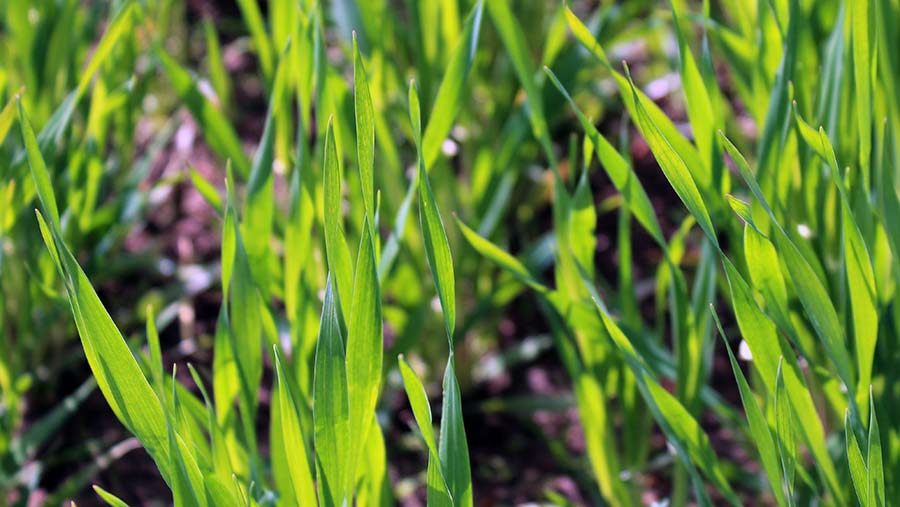
Golden Promise spring malting barley on the Monymusk Estate © Oli Hill
If it impresses this year the aim will be to ditch the Concerto and switch over completely at some stage, if and when the malting contracts allow such a move.
The feed variety Waggon has been grown for the past few years on a limited area where land was coming out of grass, as grain nitrogen levels don’t matter for feed. But with Irina making a good impression last season, it has replaced Waggon due to its higher yield and the potential to get a malting premium.
Winter barley, split equally between hybrid and two-row feed varieties, is also grown on the farms as the entry for OSR in the crop rotation and also spreading the workload at harvest, but Mr Drysdale explains the Aberdeenshire climate means there are certain areas not suited to winter cropping.
“Winter is a risk to our crops with frost and potentially wet conditions. North-facing fields suffer worst from frost heave at the end of winter.
“A week of -10C and a crop will look fairly happy, but it’s when you get big variation in night and day temperatures in early spring that leads to freeze-thaw of wet soils.
This movement of soils as the ground freezes overnight then thaws in the daytime can snap roots off the winter-sown plants and they don’t tend to recover very well.

